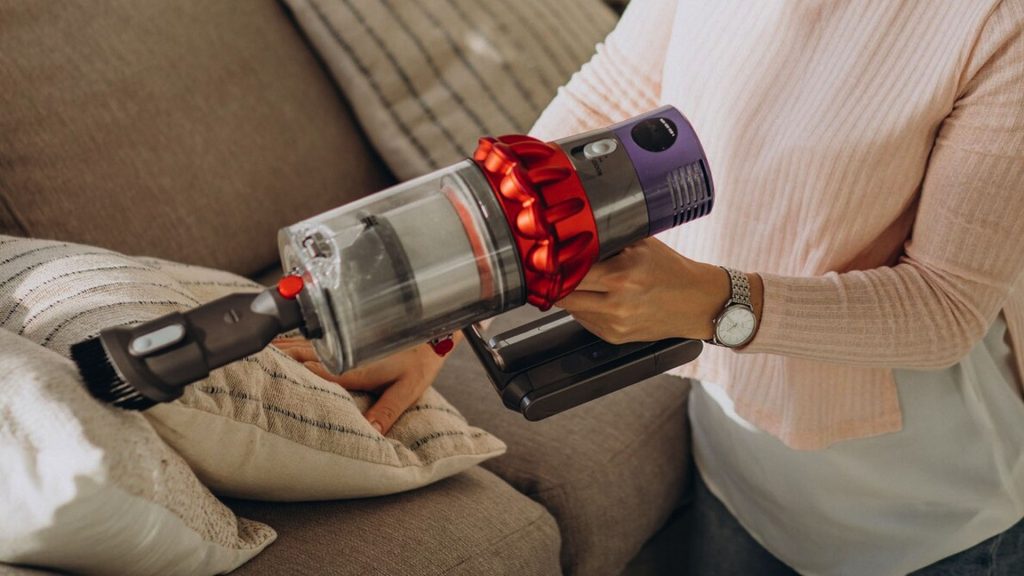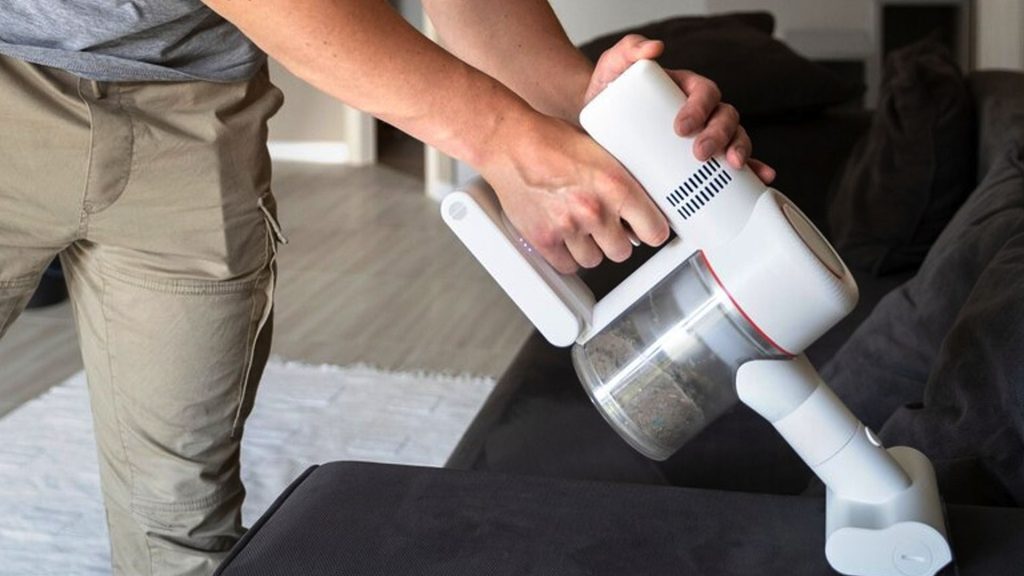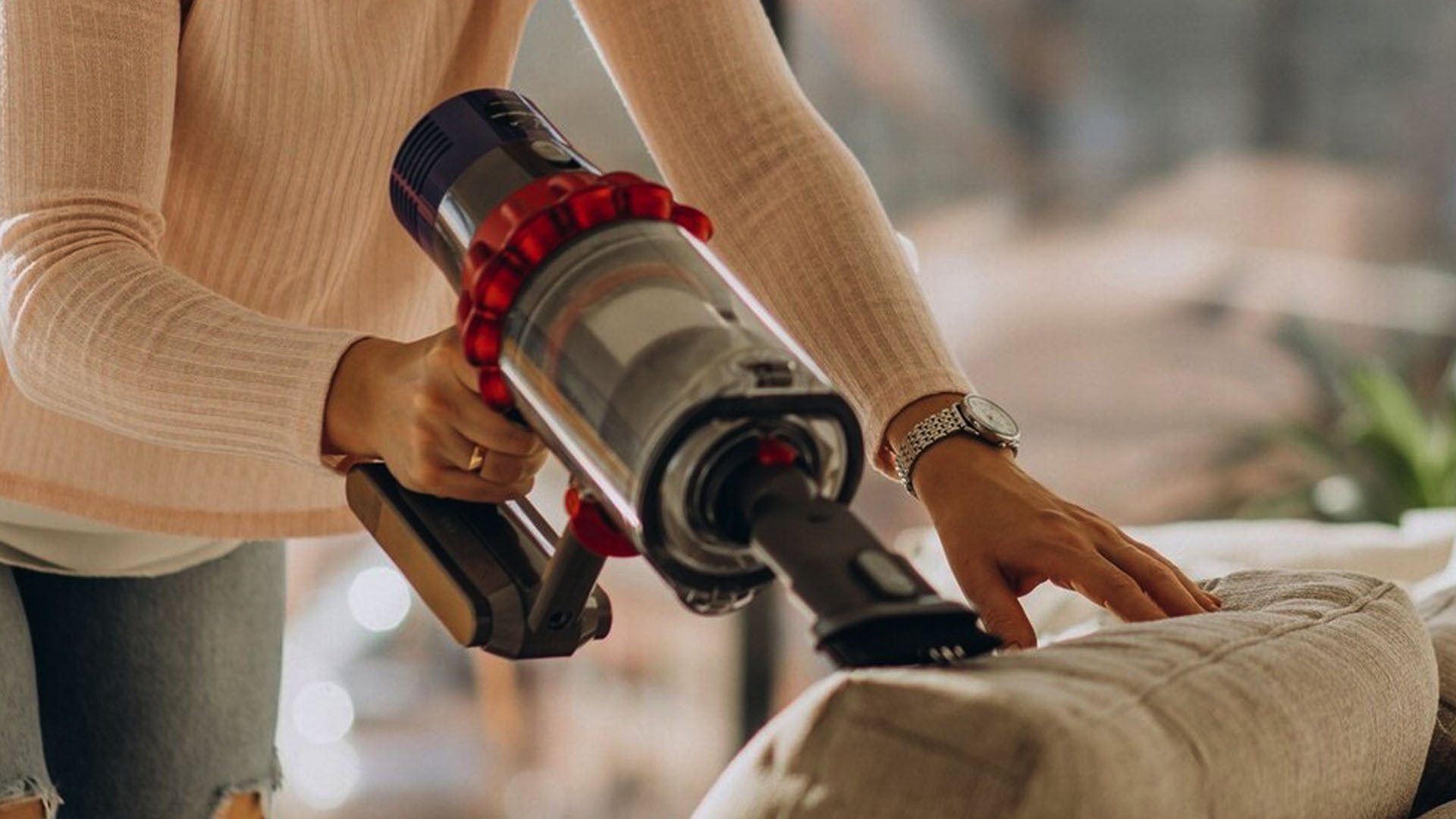Dyson stick vacuums have become increasingly popular for their powerful suction, sleek design, and convenience. As with any household appliance, they can encounter issues over time, which raises the question of whether these innovative vacuums can be repaired. In this article, we will explore the options available so you can repair Dyson stick vacuums and provide useful information about when it might be necessary.
We understand the importance of maintaining a clean and functional home, and a properly working vacuum is a crucial part of that equation. Over time, even the most reliable appliances can experience wear and tear or may face technical issues. In those situations, it is reassuring to know that options are available to repair your Dyson stick vacuum, rather than having to invest in a brand new one.
Based on our research, there are indeed ways to repair Dyson stick vacuums, whether they are in warranty or not. Next, we'll delve into how the repair process works and provide tips on when it might be appropriate to consider repairing your vacuum. Stay tuned for valuable insights and recommendations on this topic.
Common Issues with Dyson Stick Vacuums
Dyson stick vacuums are known for their powerful suction and innovative design. However, like any other product, they are not immune to certain issues that may arise during regular use. In this section, we will cover some of the most common problems encountered by users, including loss of suction, blockages, and battery life.
Loss of Suction
One of the most common issues we've encountered with Dyson stick vacuums is a loss of suction. This can occur for a variety of reasons, such as:
-
Dirty filters: Over time, the filters in the vacuum can become clogged with dirt and debris, reducing the suction power. To solve this issue, we recommend cleaning or replacing the filters regularly according to the manufacturer's guidelines.
-
Damaged seals: If the seals around the vacuum's cyclone or bin have become worn or damaged, they can cause air to leak out and reduce suction. Inspect the seals for signs of wear and replace them if necessary.
Blockages
Blockages can also impact the performance of your Dyson stick vacuum. Common areas where blockages can occur include:
-
Brush bar: Hair, thread, and other debris can wrap around the brush bar and obstruct its rotation. To resolve this issue, turn off the vacuum and carefully remove the blockage.
-
Airway paths: Dust, dirt, and debris can become lodged in the airway paths of the vacuum, causing a reduction in suction. To fix this issue, we recommend inspecting the airways for blockages and clearing them out with a long flexible brush or compressed air.
Battery Life
Another common issue faced by Dyson stick vacuum users is a decrease in battery life. Here are some helpful tips to prolong your vacuum's battery life:
-
Charge the battery fully before using it for the first time. This ensures that the battery reaches its maximum capacity.
-
Do not store the vacuum with a completely discharged battery. Make sure to recharge the battery after each use to maintain its performance.
-
Keep in mind that the battery life of a Dyson stick vacuum will naturally decline over time, as is the case with any rechargeable battery. If you find that the battery is no longer holding a charge, a dead battery may be the issue, and it may need to be replaced.
We hope that this information will help you address any issues you might face with your Dyson stick vacuum and keep it running at peak performance for years to come.

Repair Dyson Stick Vacuums
Dyson stick vacuums are known for their performance and reliability, but like any other appliance, they may require maintenance or repair from time to time. In this section, we will walk you through some simple troubleshooting and repair steps to help you get your vacuum back to working order.
Clearing Blockages
A common issue with Dyson vacuums is blockages in the airways, which can reduce suction and affect performance. To address this issue, follow these steps:
- Turn off and unplug the vacuum.
- Detach the wand and check for any visible blockages in the wand and hose.
- Remove the brush bar by pressing the release button and inspect for any debris or tangled hair.
- Check the airways in the cleaner head and main body for any obstructions.
- Once all blockages are cleared, reassemble the vacuum, plug it in, and test its performance.
Regularly inspecting and clearing any blockages in your vacuum will help ensure optimal performance and prolong the lifespan of your appliance.
Battery Replacement
Over time, the battery life of your Dyson vacuum may begin to decline, making it necessary to replace the battery for improved performance. Here are some steps to guide you through the battery replacement process:
- Turn off and unplug the vacuum.
- Locate the battery release button on the handle of your Dyson and press it firmly.
- Carefully slide the battery out of the vacuum.
- Insert the new battery by aligning the battery connectors with the vacuum's connectors, and gently slide it into place until it clicks.
- Plug in the vacuum and allow the new battery to charge fully before testing its performance.
Note that if you encounter any issues during the troubleshooting and repair process, it is recommended to book a repair or service with Dyson to ensure expert handling of your appliance. Remember that regular maintenance will help keep your Dyson stick vacuum functioning smoothly, and addressing issues as they arise will ensure the longevity of your investment.
Repair Dyson Stick Vacuums – Professional Options
When facing issues with our Dyson stick vacuum, it's essential to know the available professional repair options. Firstly, Dyson offers repair services in accordance with their service and warranty terms and conditions. Depending on the warranty status, repairs may be covered or have a cost associated with the service.
In addition, Dyson provides a free repair assessment from a Dyson Service Engineer for machines both in and outside warranty. This assessment allows a comprehensive review of available options, such as service, repair, or even upgrading to new technology.
Furthermore, there are local service providers who specialize in Dyson vacuum repair. A quick search on Yelp can help us locate nearby options for professional repair services. Comparing reviews and ratings of these businesses assist us in choosing a reliable and efficient service provider.
For those who prefer a more hands-on approach, there are numerous resources available online, such as iFixit's Dyson Vacuum Repair guides. These guides offer detailed, step-by-step instructions for troubleshooting and repairing various models of Dyson stick vacuums.
To summarize, our options for professional Dyson repair include:
- Dyson's official repair services, subject to warranty terms and conditions
- A free repair assessment by a Dyson Service Engineer
- Local service providers found through Yelp or similar websites
- Online resources offering step-by-step repair guides
By exploring these available repair options, we can ensure that our Dyson stick vacuum remains in optimal working condition.

Cost to Repair Dyson Stick Vacuums
When it comes to repairing a Dyson stick vacuum, the costs can vary depending on the specific issue and whether the vacuum is still under warranty. Dyson will repair the machine in accordance with their service and warranty terms and conditions if it's under warranty, provided that satisfactory proof of the machine's eligibility is presented.
Typically, the major components of a Dyson vacuum like the battery and the high torque cleaner head are the most expensive parts to replace. For example, a Dyson V11 vacuum battery replacement costs $149.99, and a high torque cleaner head is $111.99. These expenses can slowly add up, and it's important to weigh the pros and cons of repairing your vacuum versus purchasing a new one.
In addition to the replacement costs for parts, there may also be service fees if you're using an authorized Dyson service engineer. These professionals can provide a free repair assessment for Dyson machines both in and outside of warranty, and they'll review all the available options with you, including service, repair, or even upgrading to new technology.
Some common issues that might require a repair include suction problems on the floor head assembly or brush roller, vacuums that won't stand upright properly, and difficulties pushing the vacuum or experiencing flashing lights. These problems can sometimes be fixed without needing to replace an expensive part, making the repair more cost-effective.
Ultimately, it's essential to maintain your Dyson vacuum with regular servicing to ensure it works efficiently for as long as possible. Careful consideration of repair costs and deciding whether it might be more beneficial to invest in a new vacuum is a crucial aspect of owning a Dyson product. By understanding the potential expenses and consulting with a Dyson service engineer, we can make informed decisions to get the most out of our investment in a Dyson stick vacuum.
Maximizing Your Dyson Stick Vacuum's Lifespan
As Dyson stick vacuum owners, we all want to get the most out of our quality appliance. In this section, we will explore ways to maximize the lifespan of your Dyson vacuum by focusing on regular maintenance, updates, and accessorizing.
Regular Maintenance
Proper maintenance is essential to ensure a long-lasting and efficient Dyson vacuum. Here are some maintenance tips to follow:
- Regularly empty the dustbin and clean the filters to ensure optimal performance.
- Inspect the brush bar and remove any trapped debris, hairs, or fibers.
- Gently clean the vacuum's exterior and attachments with a soft cloth.
- Avoid using the vacuum in extreme temperatures, as this may cause the battery to age faster. According to Dyson, it's best to avoid cleaning the car in hot weather or leaving your vacuum in a cold porch or garage since the machine won't operate or charge if the ambient temperature is below 3°C (37°F).
Update
To ensure the best performance and longevity of your Dyson vacuum, it is crucial to stay updated with any product recalls, firmware updates, or recommendations issued by the manufacturer. To receive up-to-date information, register your vacuum with the manufacturer and sign up for email notifications or periodically check Dyson's official website for updates.
Accessories
Expanding your vacuum's capabilities with accessories can increase its versatility and help maintain its efficiency over time. Below are some accessories that can enhance your Dyson stick vacuum's performance:
- Mini motorized tool: Ideal for removing pet hair and ground-in dirt from carpets and upholstery.
- Soft dusting brush: Designed for cleaning delicate surfaces such as keyboards and blinds.
- Extension hose: Provides extra reach for cleaning tight spaces or high areas.
- Up Top tool: Makes it easier to clean shelves, light fixtures, and other elevated surfaces.
By taking proper care of your Dyson stick vacuum and investing in updates and accessories, you can significantly improve its lifespan and maintain its top-notch performance for years to come. Remember to follow the manufacturer's guidelines, and you'll get the most out of this quality appliance.
Alternative Options to Repair Dyson Stick Vacuums and Replacement
When it comes to Dyson stick vacuums, there might be situations where repairs may not be the best option or when it might be time to explore alternative brands. In this section, we'll discuss some other vacuum options and share some indicators that might signal it's time to replace your current Dyson vacuum.
Sometimes, repairing a Dyson stick vacuum can become too costly, especially when it's an older model or has multiple issues. In such cases, it might be more economical to look for alternatives that can offer similar features and performance. One such alternative is the Bissell Pet Hair Remover, which, like the Dyson, provides strong suction, multiple attachments, and an easy-to-open dustbin. It also weighs a similar amount, with the Dyson Humdinger at 2.2 pounds and the Bissell Pet Hair Remover at 3 pounds.
Moreover, there are some other solid options that provide good performance at a lesser cost. For instance, the Endura Express works on both carpet and hard surfaces, has a dusting brush and crevice tool, and is a budget-friendly choice.
Knowing when to replace your Dyson vacuum depends on a few factors. The first and most obvious sign is when your vacuum no longer works efficiently, despite regular maintenance and cleaning. Another indicator is when its suction power starts to decline, affecting its ability to pick up dirt and debris.
Battery life is another essential aspect of considering whether or not to replace your Dyson vacuum. If you find that the battery life has shortened significantly or if the vacuum fails to hold a charge altogether, it might be time to look for a replacement.
Finally, it's important to keep up to date with technological advancements and consider how they can benefit your cleaning routine. If your current Dyson vacuum no longer suits your needs or if you're intrigued by newer features and capabilities, it might be time to invest in a new vacuum.
In conclusion, it's essential to weigh the costs and benefits of repairing your Dyson stick vacuum against the option of purchasing an alternative or replacing it altogether. Consider performance, battery life, and advancements in technology as crucial factors in making your decision.

